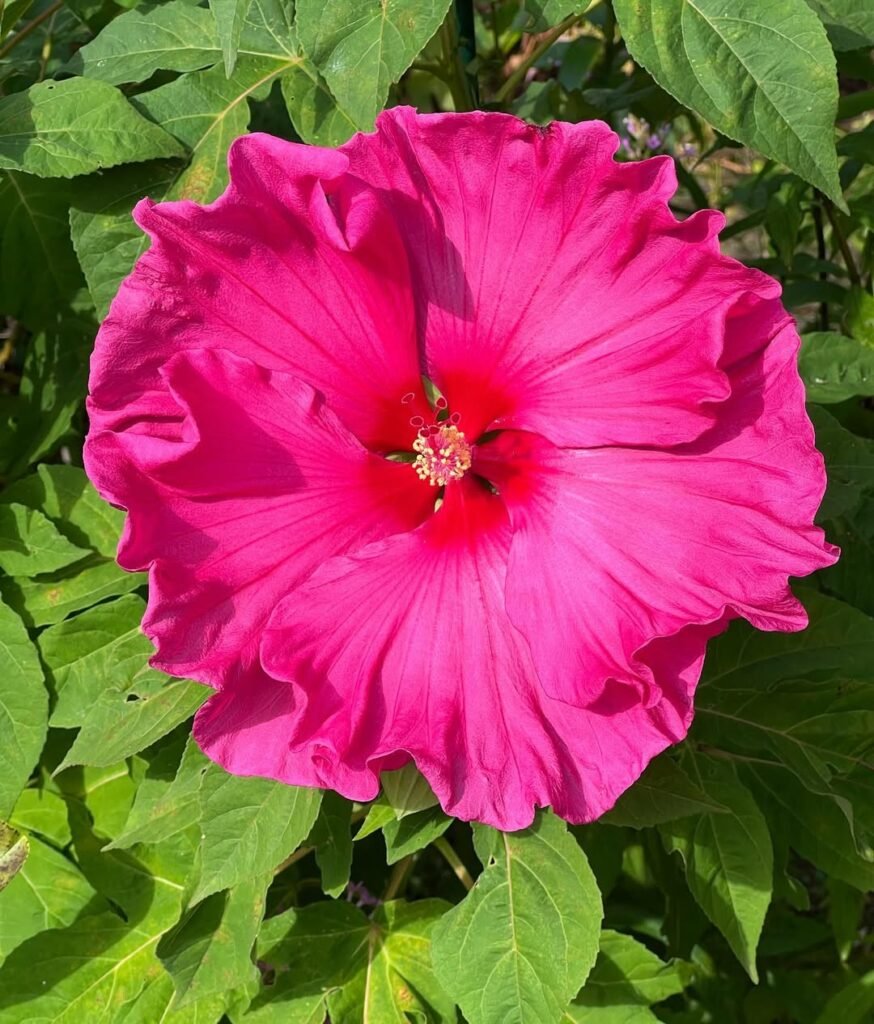Explore the diverse world of hibiscus with our expert guide. Learn about types of hibiscus, care tips, and more to make your garden bloom!

Hey there, gardening friends! I’m Ashley Scott, and with 10 years of gardening experience under my belt, I’ve grown to adore many plants—but hibiscus holds a special place in my heart. If you’re curious about the types of hibiscus and want to bring their vibrant beauty into your garden, you’re in the right place! In this guide, I’ll walk you through the different varieties, share personal tips, and answer all your questions about these stunning flowers. Whether you’re searching for “types of hibiscus with pictures” or wondering “how many varieties of hibiscus are there,” I’ve got you covered. Let’s dive in!
What is Hibiscus?

Hibiscus is a genus of flowering plants in the mallow family, Malvaceae. With over 200 species, these plants range from small shrubs to towering trees and are loved for their large, colorful blooms. Native to warm temperate, subtropical, and tropical regions, hibiscus is a global favorite. The scientific name, Hibiscus, comes from the Greek word for mallow, and their flowers can brighten up any space—trust me, I’ve seen it happen in my own backyard!
Types of Hibiscus
There are several types of hibiscus, each with unique traits and growing needs. Below, I’ll break down the main categories and share some of my favorite varieties—complete with mental pictures since I can’t show you the real ones here!
Hardy Hibiscus
Hardy hibiscus, often called rose mallow, are tough plants that thrive even in cooler climates. They’re perfect for those of us in the USA who face chilly winters. Their flowers can grow as big as dinner plates, making them real showstoppers.
- Hibiscus moscheutos ‘Luna Red’: This compact variety reaches about 3 feet tall with bold red blooms. I planted one near my patio, and its overlapping petals always catch my eye.

- Hibiscus syriacus ‘Aphrodite’: Known as Rose of Sharon, this one grows up to 10 feet and has lovely pink flowers with a red center. It’s great for hedges!

Care Tips: Plant in full sun with well-draining soil. Water regularly, especially in summer, and prune in early spring for more blooms.
Tropical Hibiscus
Tropical hibiscus varieties bring an exotic flair with their glossy leaves and vibrant flowers. They love warm weather, so in colder areas, I treat them as annuals or bring them indoors.
- Hibiscus rosa-sinensis ‘Red Dragon’: This stunner has orangey-red double flowers and can grow to 8 feet. I once grew one in a pot, and it was a tropical dream!

- Hibiscus rosa-sinensis ‘Eye of Kali’: A smaller plant with yellow, pink, and red blooms and a striking pink-red eye. It’s so unique, it’s a conversation starter.

Care Tips: Give them lots of sun and well-draining soil. Water consistently, but don’t let them sit in soggy soil. Indoors in winter if you’re in a cold zone!
Perennial Hibiscus
Perennial hibiscus die back in winter and return each spring. They’re low-maintenance and perfect for long-term beauty.
- Hibiscus grandiflorus: Called swamp rose mallow, it has big flowers that shift from white to pink. I’ve seen it thrive near a pond.

- Hibiscus lasiocarpos: Woolly rose mallow offers white or pale pink blooms with a crimson center—great for native gardens.

Care Tips: Full sun and moist soil are key. Water regularly and fertilize occasionally for best results.
Rare and Unique Hibiscus Varieties
For something special, try these rare kinds of hibiscus:
- Hibiscus mutabilis: Known as confederate rose, its flowers change from white to pink or red. I planted one last year, and the color shift blew me away!

- Hibiscus tiliaceus: Sea hibiscus has yellow flowers with red centers that turn orange. It’s a coastal gem.

Care Tips: Research their specific needs—some love humidity, others need extra warmth.
Types of Hibiscus Leaves
Did you know types of hibiscus leaves can help you identify varieties? Here’s what I’ve noticed:
- Hardy Hibiscus: Big, heart-shaped leaves with jagged edges.
- Tropical Hibiscus: Shiny, dark green, and often elongated.
- Perennial Hibiscus: Sometimes velvety or woolly, adding texture.
Next time you’re shopping for hibiscus, check the leaves—they tell a story!
Hibiscus Colors and Varieties
The hibiscus colors varieties are a feast for the eyes. Here are some highlights:
- Red Hibiscus Varieties: Think ‘Luna Red’ or ‘Red Dragon’—bold and fiery!
- Yellow and Orange: ‘Eye of Kali’ or ‘Voodoo Queen’ bring sunshine to your garden.
- White and Cream: ‘White Chiffon’ or ‘Blue River II’ offer timeless elegance.
Colors can shift with age or conditions, which keeps things exciting. My ‘Luna Red’ once faded to a softer hue—nature’s surprise!
How Many Varieties of Hibiscus Are There?
Wondering how many varieties of hibiscus are there? There are over 200 species, and with hybrids, we’re talking thousands of cultivars! From common types to rare kinds of hibiscus, the diversity is endless. I’m always discovering new ones to try.
Growing and Caring for Hibiscus
Here’s my go-to advice for growing hibiscus:
- Sunlight: At least 6 hours of direct sun daily.
- Soil: Well-draining—mix in compost if needed.
- Watering: Keep soil moist but not soaked. I water deeply in summer.
- Fertilizing: A balanced fertilizer in spring and summer works wonders.
- Pruning: Early spring cuts encourage growth. I trim my ‘Aphrodite’ every year!
Check out my Hibiscus Care Guide for more details!
Common Pests and Diseases
Hibiscus can attract aphids, spider mites, or whiteflies—I’ve battled them all! Use insecticidal soap or neem oil to fight back. Root rot is a risk if soil stays too wet, so drainage is key. The University of California has great pest tips.
Using Hibiscus in Landscaping
Hibiscus shines in gardens:
- Focal Points: A big ‘Red Dragon’ can steal the show.
- Hedges: ‘Aphrodite’ makes a colorful screen.
- Pots: ‘Luna Red’ looks fab on a patio.
Pair them with plants like lavender or salvia—see my Companion Plants Guide for ideas!
My Personal Hibiscus Journey
My first hibiscus was a ‘Luna Red,’ planted years ago. Watching those red blooms unfurl was pure joy—it sparked my obsession! Start with a hardy type if you’re new; they’re forgiving and build your confidence. Every garden’s different, so experiment and enjoy the process.
Conclusion
The types of hibiscus offer something for everyone—vibrant colors, unique varieties, and endless possibilities. Whether you pick a hardy, tropical, or rare type, these flowers will light up your garden. I hope you’re inspired to try one (or three!) in your own space. Got a favorite hibiscus story? Share it below—I’d love to hear!





One comment on “Types of Hibiscus: Your Ultimate Guide to Growing and Caring for These Stunning Flowers”